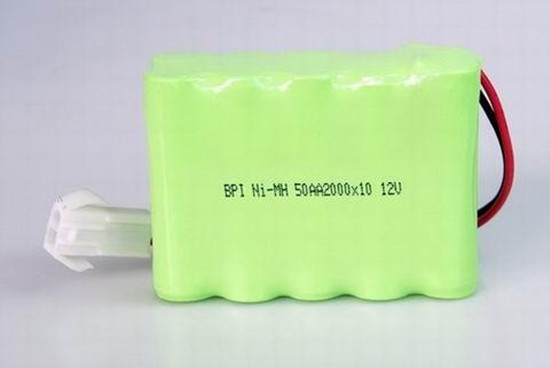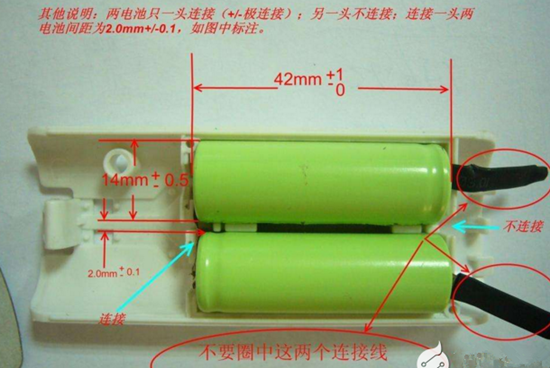Welcome to Fujian Weidong New Energy Co., Ltd
Tel:+86 597 5680903/+86 18059788355 E-mail: sales@chinahev.cn


Comprehensive analysis of nickel-metal hydride battery charging and maintenance methods
- Categories:Industry News
- Author:
- Origin:
- Time of issue:2020-04-03 14:20
- Views:
Comprehensive analysis of nickel-metal hydride battery charging and maintenance methods
(Summary description)Comprehensive analysis of nickel-metal hydride battery charging and maintenance methods...
- Categories:Industry News
- Author:
- Origin:
- Time of issue:2020-04-03 14:20
- Views:

Introduction to NiMH Battery Charging
1. Memory effect of Ni-MH battery
NiMH batteries have the same memory effect as NiCd batteries, but they are much smaller than NiCd batteries. Therefore, it is not necessary to perform the discharge operation every time you charge (because the improper operation will damage the battery), you only need to fully charge and discharge once every three months to ease the memory effect.
2.Self-discharge rate of Ni-MH battery
Ni-MH batteries are 25 to 35% (months), nickel-cadmium batteries are 15 to 30% (months), and lithium batteries are 2 to 5% (months). NiMH batteries have the highest self-discharge rate, while lithium batteries have extremely low discharge rates compared to the other two types of batteries.
3. Charging method of Ni-MH battery
Neither nickel-metal hydride batteries nor lithium batteries can withstand overcharge. Therefore, the PICK CUT control mode of nickel-metal hydride battery charging at a constant current is the best charging method when the charging voltage reaches the highest level. Lithium batteries are best charged with a constant current and constant voltage. If they are charged with the Ni-Cad battery charger-DV control method, the service life of nickel-metal hydride batteries and lithium batteries will be affected.
4. Is the higher the capacity of Ni-MH battery the better?
Different types of batteries have higher capacity and longer usage time. Aside from volume and weight, of course, the higher the capacity, the better.
However, the same battery model has the same nominal capacity (such as 600mAh), and the actual measured initial capacity is different: for example, one is 660mAh and the other is 605mAh, so is the 660mAh better than the 605mAh?
The actual situation may be that the capacity is high because there is more in the electrode material to increase the initial capacity and reduce the stability of the electrode. As a result, after dozens of cycles, the high-capacity battery quickly loses its capacity and the capacity is low. Battery is still strong. Many domestic battery cell manufacturers often obtain high-capacity batteries in this way. However, the user's standby time after half a year of use is a mess.
Those AA nickel-metal hydride batteries for civilian use (that is, the fifth battery) are generally 1400mAh, but they also have standard ultra-high capacity (1600mAh), and the same is true.
Ni-MH battery charging method

The scientific charging method can prolong the service life of Ni-MH batteries.
1. In general, new Ni-MH batteries have very little power, so please charge them before purchasing and then use them.
However, if the battery leaves the factory for a short time and has sufficient power, it is recommended to use it before charging. New nickel-metal hydride batteries generally need to be charged and used 3-4 times before their performance can be maximized.
2. Although the memory effect of the Ni-MH battery is small, it is best to recharge it after each use, and it is fully charged at one time. Do not use it for a while and then recharge it. This is an important point of "extending life".
3. When charging, pay attention to the heat dissipation around the charger. Keep the battery clean when not in use, especially the contacts at both ends, and wipe it with a soft dry cloth if necessary. If not used for a long time, remove the battery from the battery compartment and place it in a dry environment.
4. After being stored for several months, the nickel-metal hydride battery will enter a "sleeping" state, and the battery life is greatly reduced. If the nickel-metal hydride battery has been stored for a long time, it is recommended to charge it with a slow charge first. Generally, the voltage of Ni-MH battery is below 1.2V before charging, and the normal voltage is about 1.4V after being fully charged. This can determine whether the battery is fully charged.
Ni-MH battery charges for the first time
The first charge after the nickel-metal hydride battery leaves the factory involves two aspects:
The first is whether to charge first and then use, and the second is how long the charge is appropriate.
In general, new nickel-metal hydride batteries only contain a small amount of electricity, which is closely related to the higher self-discharge rate of nickel-metal hydride batteries. If the nickel-metal hydride batteries have a charge of 40% when they leave the factory, the monthly self-discharge rate is as high as In 30% of cases, the charge after January is only 10%, and for a longer period of time, some batteries will be discharged (that is, not charged), and nickel-metal hydride batteries also have a feature that High, the greater the self-discharge rate, so even if the amount of charge is higher at the factory, the amount of power after a certain period of time is still small. Therefore, a new battery must be charged for the first time before use. However, in another case, you can use the battery before charging. Since 2005, low self-discharge nickel-metal hydride batteries have been introduced to the market. At present, some domestic manufacturers also produce low self-discharge batteries. However, because the structure of the low self-discharge nickel-metal hydride battery is complicated, the cost is much more expensive than the ordinary type, so the proportion of low self-discharge nickel-metal hydride batteries on the civilian market is small. If the authentic brand of this type of battery has a short delivery time (for example, within one month), it usually has enough charge, because the rechargeable battery can be used normally if the charge is more than 30%, so the nickel-hydrogen battery is charged for the first time. Can be used before. Once the nickel-metal hydride battery starts to charge, you have to choose how to charge it. It is generally believed that the nickel-metal hydride battery before the first charge is very small, so it should be appropriate to use a small current and constant current charging method. Most of them are charged at a rate of 0.1C for 12 to 14 hours. Small current charging has no negative impact on the battery. It doesn't matter much even if a little overcharge is possible. At the same time, it can also ensure that the battery can recover 100% of the battery capacity within the charging voltage range. The first charge must also be fully charged to maximize performance.
The first thing to say is whether to charge or discharge before using a new battery, depending on what charger you use. If you use slow charging, you can charge first, and the charging time can be longer than the normal charging time, which is good for activating the battery; but if you use fast charging (especially using protection devices that do not prevent overcharge and overheat protection) For other fast charging), it is better not to charge first, but to discharge first.
In order to simplify the operation, we can charge the battery regardless of the method used or the date of production of the battery, or discharge the battery before charging. The so-called first discharge is also very simple. No special method is required. It is normally used in an electrical appliance (such as DC, MP3, etc.). When the electrical appliance prompts that there is no electricity, recharge it.
When the new battery is used for 3-5 times, the charging time may be slightly longer (not too long, of course), which is beneficial for activating the battery; it is best to perform a full charge and discharge cycle for each subsequent use, that is, fully charged Recharge it after use until it runs out. This will help reduce the battery's memory effect and extend the battery's life.
For nickel-metal hydride batteries that you do not want to use for a long time, remove them from the appliance, and then fully charge them before storing. Otherwise, after a long period of storage, when you want to use these batteries again, you will find that the batteries are broken because the batteries are over discharged. The best conditions for storage of nickel-metal hydride batteries are about 80% of the charge. This is because the self-discharge of nickel-metal hydride batteries is large (about 10-15% a month). For example, if the battery leaves the factory and is not used for a long time (if it is not sold), the self-discharge of the battery will cause the battery to over-discharge and damage the battery. Therefore, new batteries are fully charged when they leave the factory (At least 80-90% full), so when you get a new battery, the battery is usually charged.
It is best to perform a complete charge and discharge cycle for each use, that is, to use it until it is fully discharged and then recharge it. This will help reduce the memory effect of the battery, extend the battery life and maintain performance. In addition, avoid interrupting the charging process. We usually have some bad habits, such as unplugging the charger during the charging process to see how hot the battery is, and then plugging the charger back in. This usually results in an unstable charging cycle and the battery restarts the full charging cycle, but the previous charging cycle has been completed. Unstable charging cycles can reduce battery life.
——From Electronic Enthusiasts
Copyright © Fujian Weidong New Energy Co., Ltd




